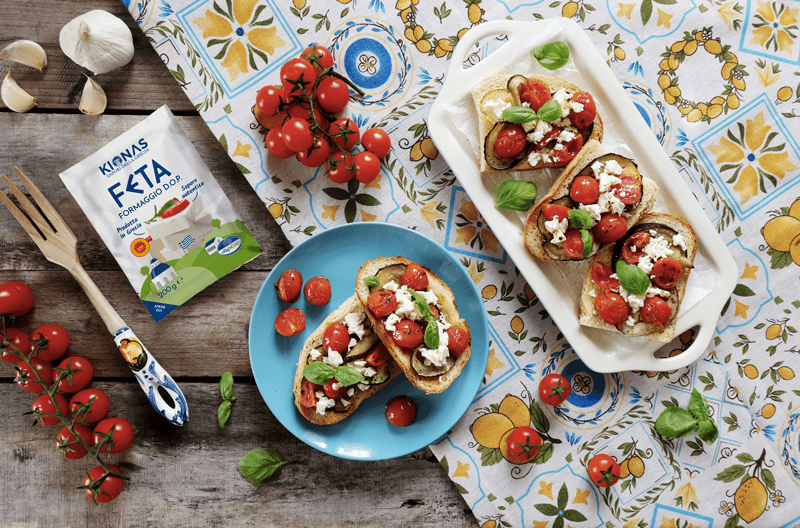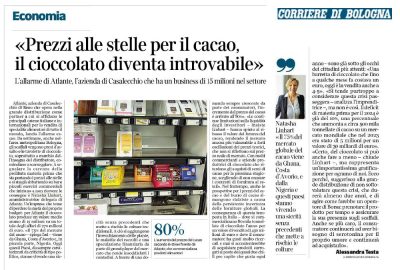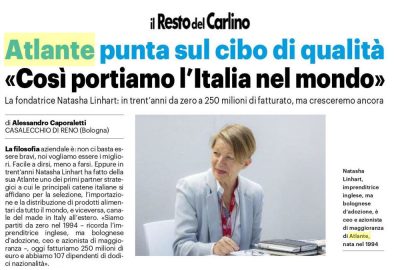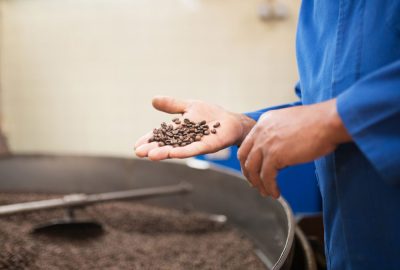Atlante
News
The feta market in Italy continues to grow with record values

4 September 2023
Greece specialist Atlante is riding the wave of success of the most popular Greek cheese among Italian consumers and registering staggering growth rates.
In recent years, Greek cheeses have conquered the palates of Italians thanks to their distinctive flavour and versatility in cooking, sometimes surpassing the consumption of more traditional Italian cheeses.
The Feta market in Italy today is worth €79 million, with a growth rate of +23% in value and +0.2% in volume compared to the previous year. (Nielsen data: June 2023)
Atlante supplies many private labels but is also present in the market with two of its own brands, Pavlakis and Kionas, which are registering significant increases in both value (+118%) and volume (+83%).
Giovanna Chiarini, Atlante’s director of food acquisitions, was interviewed by Sole 24 Ore, as Atlante’s expertise in Greek products and the quality of Atlante products are now recognised.
74 million in sales
Italy is the home of cheese, but Feta holds the record
More than 250 cheeses are produced in Italy, yet the one that shines the brightest in terms of growth is imported from Greece. Thanks to steady growth in recent years, Fetahas now earned a significant place on the Italian table. Sales in modern distribution are close to 6 thousand tonnes for a value of 74 million euros and continue to grow, while most other fresh cheeses are losing volume (source: NielsenIQ). Moreover, feta is one of the most expensive fresh cheeses (€12.66/kg on average), surpassed only by mascarpone and goat’s cheese.
Today, three times as much Feta is sold in supermarkets as traditional goat’s cheese or the trendy stracciatella, while the takings are higher than those of robiola and fiocchi di latte. Not bad for a cheese that, until a few years ago, was little known in Italy or at most considered a souvenir from holidays in Greece. “The fact that it comes from a country that is a popular tourist destination has been a strong point for the affirmation of Feta, which is considered a traditional and authentic cheese,” explains Giovanna Chiarini, food purchasing manager of Atlante, a company specialising in Greek products which supplies Feta to many private labels and sells it under its Kionas brand. The search for quality products with more distinctive flavours and the high-protein boom, which is driving consumption worldwide, have also played in its favour.
A study by Allied Market Research estimates that the global Feta market is worth USD 10.5 billion and could reach USD 15.6 billion by 2028. But, similarly to Greek yoghurt, ‘Greek style’ products made in different countries by international dairy giants dominate over PDO Feta, i.e.,Feta made in Greece with a mixture of at least 70% sheep’s milk and at least 30% goat’s milk. Exports, however, are the lifeblood of the Greek dairy sector, which in 2022 sold abroad more than 65% of the 127,000 tonnes of feta produced in the country for a record value of €605 million, 56% more than pre-Covid. 70% of Greek exports are still concentrated in five countries: Germany is in first place (source: Greek Ministry of Rural Development and Food),while Italy absorbs only 11% but buys more and more. In fact, in 2022 it imported 11,500 tonnes of Feta for a value of around€80 million (+13.4% and +48.4% respectively compared to 2021, source: Istat).
But how isFetaused in Italian kitchens? Not only as the star of the well-known Greek salad, but increasingly as an ingredient in more elaborate recipes, such as filo pastry dumplings or pastabakes, which have been trending on social media for months. The gastronomic versatility of this cheese and the fact it does not melt when cooked are two interesting benefitsthat support market growth and the development of the ‘baked Feta’ segment.






